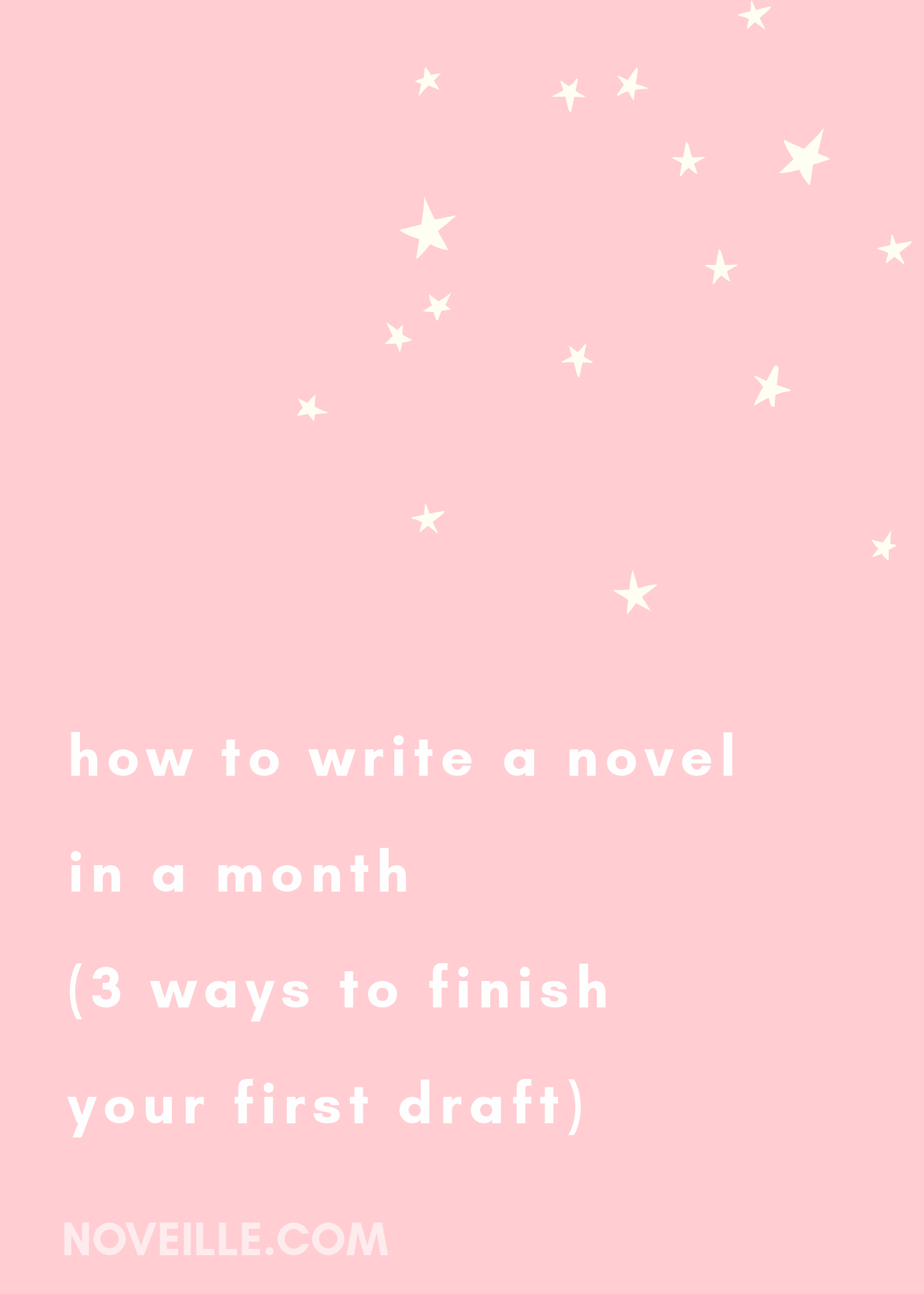Life of Noveltea participates in affiliate marketing programs for products I love, including Amazon Affiliates. I may earn a commission on purchases made through my links at no extra cost to you. Thanks for supporting my work!

After trying NaNoWriMo (National Novel Writing Month) a few years ago, I’m hooked on quick and dirty first drafts. It’s completely possible to write the first draft of a novel in a month!
Some people like to fly by the seat of their pants when they novel. They have a vague idea of where they want the story to go, and trust that throwing enough words at the page will eventually get them there. I’ve found that I work best with lots of background material and an outline.
Below, you’ll find three ways to write a novel in a month that will help get you over the finish line with your very own first draft. We will start with the least structured and build from there.
Sink or swim
Not for the faint of heart, this is the method of jumping in and hoping for the best. It has the least structure and can be best if your goal is to teach yourself to get in that all-important daily word count. For this method you will need:
- daily word count goal
- general idea of what might happen in your story
- ideas for your protagonist and antagonist
With those in mind, you’re off to the races. Your novel in a month first draft will be complete after meeting your daily word count goals for thirty days. I’m going to be very clear: I don’t recommend this method. Every time I’ve tried it, my first drafts are a frustrating mess. Why create more work for yourself? Do some prewriting instead and get a better idea of where you are going before you start.
Use a short story
With this method, you start with a short story and expand it into a novel. The Sophie Mayko series actually started this way. I had an interesting dream, thought it would make an interesting short story, and now I’m three books into a series.
For this method, you will need:
- daily word count goal
- a short story that you’ve written
- comprehensive knowledge about your characters
This method is especially good if you are character-focused. You probably know a bit about your characters from the short story. It’s relatively easy to create new plot based on their motivations and backstory. A novel in a month with this method strikes a good balance between pantsing it and planning it.
Start with a full-blown prewrite
Although I have finished drafts by sink or swim and by starting with a short story, this is now my preferred method. More work upfront means less work in clean up! Abandoned and orphaned drafts are also less of a problem. If you know the plot and characters are solid, you don’t have to worry about creating something that’s actually completely unworkable.
For this method, you will need:
- daily word count goal
- character sketches
- plot summary
- scene outline
Your imagination is infinite, your time is not. For most of us, discipline eventually has to go hand-in-hand with inspiration for our best chance of success. Book in a Month by Victoria Lynn Schmidt is a great resource for learning this method. I use a pared-down version, so don’t feel that you have to follow it exactly. Create the amount of structure that works best for you!
Draft your own novel in a month
To make any of these methods work, you need to dedicate time every day to make it happen. However you choose to draft your novel, just know that you can do it. And I’m rooting for you! The biggest difference between being a writer and an “aspiring writer” is the amount of work you put in.
Don’t believe me? Writing a book from start to finish isn’t easy, but it’s worth it. I choose to indie publish my novels, but my herbal recipe book was published by a division of Simon and Schuster in 2018. The process of drafting and polishing is the same no matter what you write. It always starts with a first draft!
I recently read Grit: the power of passion and perseverance by Angela Duckworth (#affiliate). It’s not about writing per se. However, the takeaway from the book is that, although our culture reveres talent, talent is only a measure of how quickly your skills grow when you put in the effort.
Success requires grit: the ability to keep going even when there’s a steep learning curve or you need more practice. So, go forth and practice! Dedicate the time, sit down, and write the first draft.
Essential tools for writing a novel in a month
I use Novlr (#affiliate) to draft my novels and organize my drafts, and Grammarly to make sure they are edited well. Read my Grammarly review and see why it’s now one of my essential writing tools!
Photo by Ella Jardim on Unsplash






